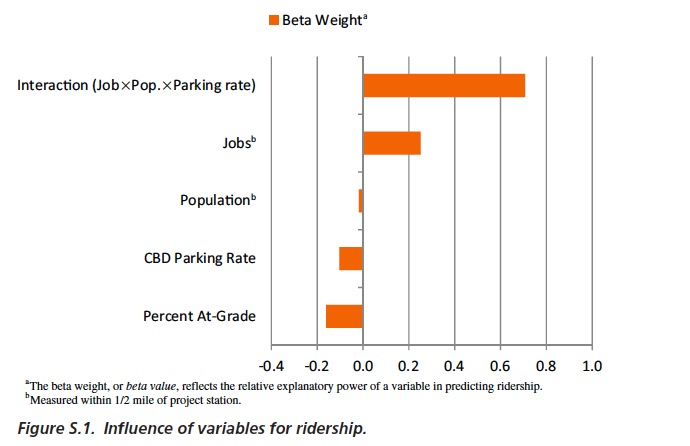TRANSPORTATION RESEARCH BOARD
Fixed-guideway transit projects, such as urban rail and bus rapid transit (BRT) lines, are among the largest infrastructure investments that cities and metropolitan areas make. With capital costs ranging from tens of millions to several billion dollars, decisions on whether to build a fixed-guideway transit project, and what kind of project to build, are not taken lightly by local officials or their funding partners. Such decisions may follow many years of planning and analysis at the system, corridor, and project levels. It can cost millions of dollars just to develop and apply the analysis tools that are typically used to evaluate alternative projects.
TCRP Project H-42, “An Exploration of Fixed-Guideway Transit Criteria Revisited,” was undertaken to develop a relatively sophisticated, data-driven, indicator-based method for predicting the potential success of a fixed-guideway transit project. The goal was to develop a method that would predict the likelihood of project success based on the conditions present in the corridor and the metropolitan area. The project was partly intended to define success measures. For this research, success measures were defined based on project ridership and the change in transit system usage, and a set of indicators was identified that are strongly related to these measures based on an intensive data collection and statistical analysis process.
Background
- To develop a basis and context for the analysis, the research team Reviewed literature on the connection between a transit project’s success (such as ridership) and the characteristics of its service, measures of its connectivity, and features of the surrounding area;
- Evaluated factors that have been studied in the past in both defining and predicting transit success, particularly system ridership, as well as the tools used to measure and evaluate those factors;
- Catalogued data sources from which a research database could be built; and
- Conducted focus groups and interviews with transportation professionals to identify the factors that practitioners use to evaluate and predict the success of transit investments in real-world situations.
Analysis
The research team developed a geographic database of fixed-guideway transit projects built between 1974 and 2008, the corridors and stations where they operate, and the metropolitan areas they serve, as well as the routes and stops of almost all fixed-guideway transit systems in the United States. The team collected data on project and system ridership capital cost, service frequencies, measures of connectivity to the larger transit network, regional and local demographics, and the relative costs of driving in terms of parking and congestion.
The project team created two data sets. The project data set included 55 projects, primarily heavy rail transit (HRT) and light rail transit (LRT), with small numbers of commuter rail (CR) and BRT investments. The projects were either entirely new fixed-guideway systems (i.e., starter lines), expansions of a system through new corridors and services, or extensions of existing transit lines. The researchers also created a metropolitan statistical area (MSA) data set consisting of 244 MSAs across the United States where transit operates; 18 MSAs in this data set have some form of fixed-guideway transit.
Using these data sets, the research team developed statistical models to predict two success metrics: the average weekday ridership on the project, and the change in annual passenger miles traveled (PMT) for all transit in the metropolitan area including bus and rail. The researchers aimed to develop simple yet highly explanatory models and tested a large number of variables before settling on the final set of factors that best explain ridership and PMT change.
Project Ridership Model
The project team tested how the average daily ridership on a project was affected by hundreds of measured factors. The purpose of this part of the analysis was to provide further information about which factors are consistently associated with higher ridership on new fixed-guideway transit investments. As shown in Figure S.1, the researchers found that employment and population near stations, the cost of parking in the central business district (CBD), and grade separation were highly influential—more so than many other measures that might be thought to have strong influences, such as the walk score near stations, whether the project is located in the CBD, or even the size and accessibility of the existing transit network. The fit of the model was high, as shown in Figure S.2. Previous research had not compared the relative importance of these factors. The degree of grade separation is likely influential because it serves as a proxy for service variables such as speed, frequency, and reliability that may lead to greater transit ridership. By far the largest impact on project-level ridership came from the interaction of jobs and residents near stations, and parking cost in the CBD. In other words, the fixed-guideway transit investments with the greatest ridership were those that enabled good connections between workers and employers, and between customers and sellers, in cities where commuting by car was expensive.
Download full version (PDF): Making Effective Fixed-Guideway Transit Investments
About the Transportation Research Board
www.trb.org
“The mission of the Transportation Research Board is to provide leadership in transportation innovation and progress through research and information exchange, conducted within a setting that is objective, interdisciplinary, and multimodal.”
Tags: National Academies, Transportation Research Board, TRB of NA







 RSS Feed
RSS Feed